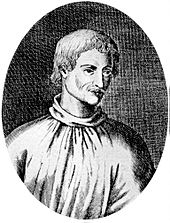
Back تعددية كونية Arabic Pluralismo cósmico Spanish Pluralità dei mondi Italian کوسمک پلورازم PNB Pluralism cosmic Romanian Космический плюрализм Russian Kozmik çoğulculuk Turkish Космічний плюралізм Ukrainian کونیاتی تکثریت UR
This article needs additional citations for verification. (February 2008) |

Cosmic pluralism, the plurality of worlds, or simply pluralism, describes the belief in numerous "worlds" (planets, dwarf planets or natural satellites) in addition to Earth (possibly an infinite number), which may harbour extraterrestrial life.
The debate over pluralism began as early as the time of Anaximander (c. 610 – c. 546 BC) as a metaphysical argument,[2] long predating the scientific Copernican conception that the Earth is one of numerous planets. It has continued, in a variety of forms, until the modern era.
- ^ Virgilio Salvestrini, Bibliografia di Giordano Bruno, Firenze, 1958
- ^ Simplicius, Commentary on Aristotle's Physics, 1121, 5–9 (English translation in: Simplicius, On Aristotle Physics 8.1-5, Translated by István Bodnár, Michael Chase and Michael Share, New York, Bloomsbury, 2012, p. 22).